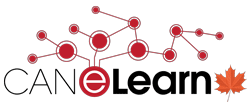This entry was originally posted on the State of the Nation: K-12 e-Learning in Canada website and was mentioned in November CANeLearn Newsletter.
Approximately one year ago, the State of the Nation: K-12 e-Learning in Canada researchers released “Funding and Resourcing of Distributed Learning in Canada.” While not produced as a formal part of the Ministry’s process, this report was written with the British Columbia funding review in mind.
Earlier this month, the Independent Funding Model Review panel established a series of working groups – one of which focused on the funding of online learning – that was recently released (see below).
 The Online Learning Implementation Working Group (the Working Group) was tasked with assisting the Ministry of Education in determining the best approach to implementing Recommendation 10 of the Independent Review Panel’s report:
The Online Learning Implementation Working Group (the Working Group) was tasked with assisting the Ministry of Education in determining the best approach to implementing Recommendation 10 of the Independent Review Panel’s report:
With the shift to a per-student-based funding model, the Ministry should develop a new policy and program delivery model for Distributed Learning to ensure consistent access to quality programming for all students in the province.
The Working Group agreed that Distributed Learning (DL) has long supported the province’s commitment to serve every student and to provide access to education despite the challenges of geography or circumstance. The Working Group also agreed that the current DL model needs improvement to ensure that issues of quality, equity, accountability and access are addressed, regardless of any new funding model.
The Working Group suggested that term DL was not well understood, and the current legislative definition was outdated and restrictive. They offered a few alternatives, including e-Learning or online learning. Either term supports their view that DL be considered an integrated part of the continuum of learning, not necessarily a separate “program.” For the purpose of this report, we will use the term “e-Learning.”
The Working Group discussed thoroughly the need for e-Learning, its integration across the education system and its potential to better support students. The work included:
- Workshopping the 22 recommendations from the Independent Review Panel for a common understanding and identification of the connections with Recommendation 10, and to discuss the strengths and weaknesses of the recommendations;
- Defining challenges and opportunities that exist within the current model;
- Revising the vision statement for e-Learning, as a foundation for program and funding policy;
- Reviewing research, including a summary of current literature and promising practices in other jurisdictions;
- Collecting and reviewing samples of DL data from current DL program providers. This was compared to overall provincial data on course completion to articulate/provide evidence on the current successes and challenges;
- Developing student profiles (holograms) and the document “Student Journey” to better understand the range of learners served by DL, their learning needs and their goals;
- Analyzing and evaluating three potential service models for e-Learning, leading to the development of the proposed model;
- Identifying challenges and proposing mitigation strategies for the proposed model, including funding; and
- Providing advice on key policy questions from the perspectives of stakeholders.
To access the report directly, click here. To access the working group’s website, click here.
